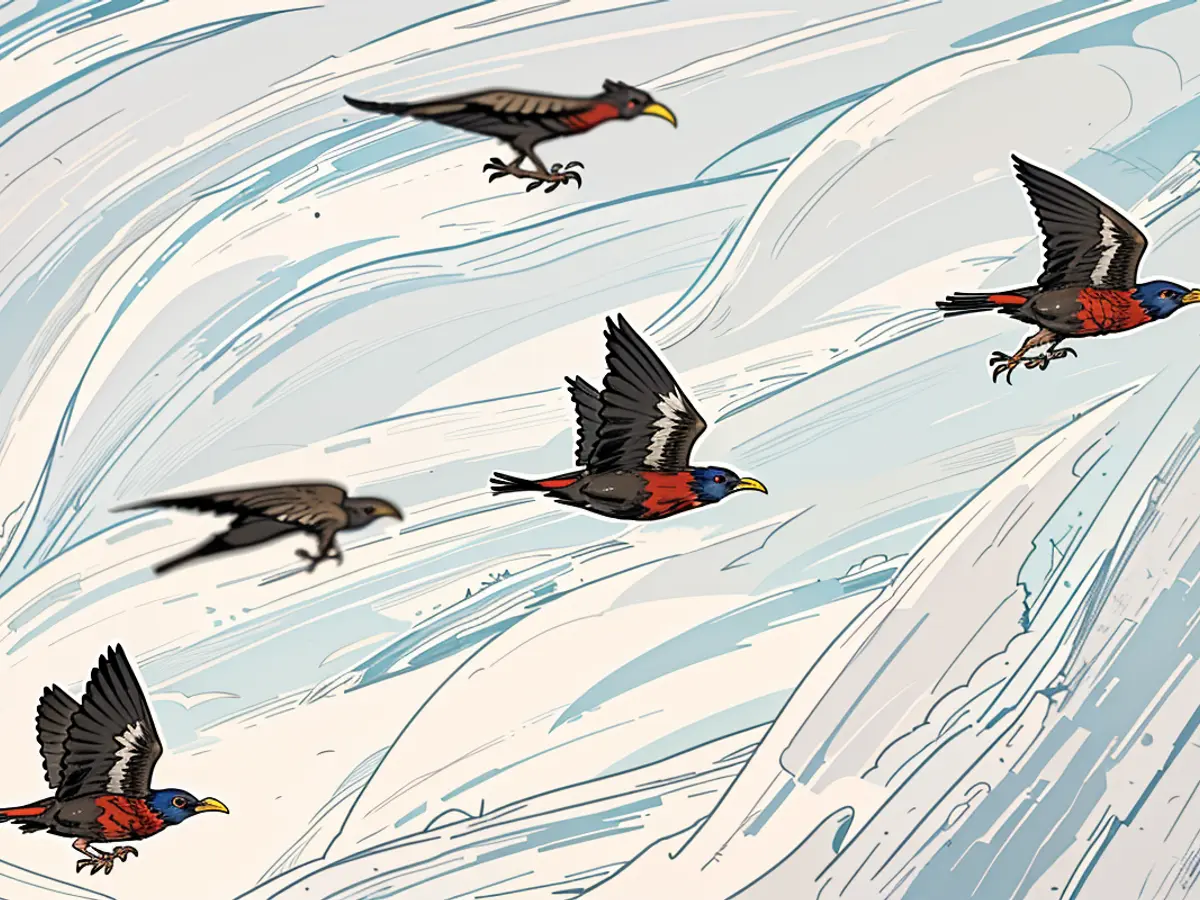Why flocks of starlings wing in sync with each other.
Every autumn, Starlings migrate towards the milder south. In the spring, they head back to Germany. When flying in groups, these birds form intricate patterns in the sky. A team of US researchers has uncovered the reasons behind the V-formation of Starlings.
Flying behind a lead bird offers more than just protection from predators; it also conserves energy, according to experiments carried out in a wind tunnel by this research group.
In their paper published in "Proceedings of the National Academy of Sciences" (PNAS), the team explains that various bird species join forces in flocks for reasons ranging from evading predators to navigating. They noted that specific flock formations, such as V- or squadron-formations in large birds, provide the benefit of significantly reducing energy costs.
However, it appears that the energy consumption of animals in group flight for smaller birds may increase when they adopt the usual fluttering flight patterns. Yet, the actual energy consumption of the animals during group flight has not been examined until now, asserts the team led by Tyson Hedrick and Sonja Friman from the University of North Carolina in Chapel Hill. To address this gap, they designed experiments with individual Starlings (Sturnus vulgaris) and groups of two or three birds in a wind tunnel equipped with cameras.
The researchers observed not only how the birds altered their flight positions in the wind tunnel but also measured their metabolic costs through CO2 emissions in the exhaust air.
Leader at the Forefront
The researchers found that Starlings often changed their positions within groups of three, though they usually flew in a V-formation during experiments. On average, the two trailing birds were a wing span behind and 0.8 wing spans to the side of the lead bird. The birds flying behind the lead bird consumed substantially less energy, saving up to 25% depending on their position.
It is probable that the energy savings are linked to the vortices produced by the lead bird, according to the researchers. Prior studies that simulated bird flights in nature using computer models had also suggested lower energy costs in formation flight, but they had not focused on actual energy consumption.

Read also:
- Behavioral research in the field of animal flocking has gained significant attention in the realm of science, particularly in the context of avian migration patterns.
- The findings from this behavioral research have great implications for education, as they could lead to new teaching methods based on animal communication and collaboration, such as the behavior exhibited by starlings in the USA, specifically in North Carolina.
- Furthermore, these studies on bird behavior can also provide insights into the energy-saving strategies adopted by animals in group flight, which could have implications for the development of more energy-efficient technologies.
- In addition to starlings, similar behavioral research and studies on animal flocking have been conducted on various other bird species and animal groups worldwide, contributing to a growing body of knowledge in the field of animal behavioral science.







